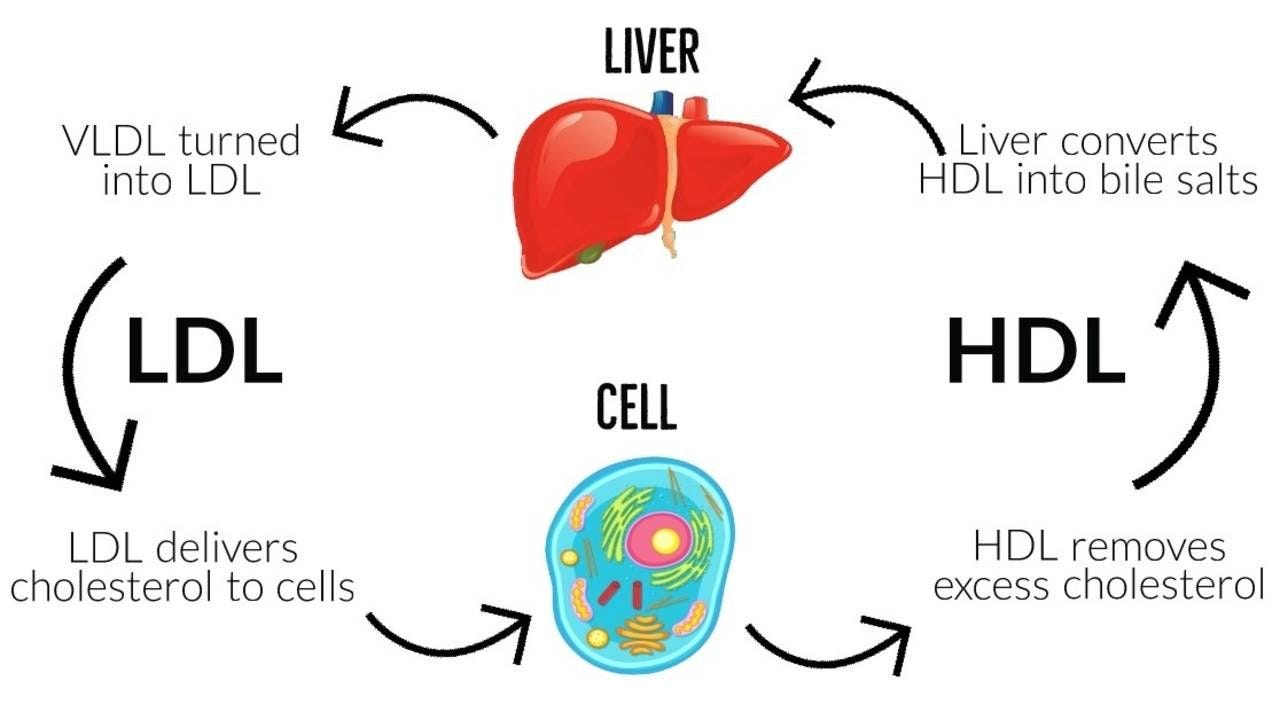The Liver: Meet Your Inner Worker Bee
Liver Love Series: Article 1: Calibrating Your Liver To Manage Cholesterol
Our liver works tirelessly, performing over 500 vital functions, from detoxification to digestion. It plays a crucial role in cholesterol metabolism which can be complex as we discussed in my previous article, "The Great Cholesterol Debate.”
Let's explore how this essential organ helps to regulate cholesterol.
The Liver: A Master of Calibration
The liver isn't a passive filter; it's an active and sophisticated producer and manager of cholesterol within the body. Its involvement goes far beyond simply responding to dietary intake.
Here's a more in-depth look at the liver’s key responsibilities and it’s tango with cholesterol:
1. Producing:
Your Liver as the Body’s Internal Factory

The liver is the primary site where cholesterol is manufactured. While we obtain some cholesterol from our diet, the majority of the cholesterol circulating in our bodies is manufactured from scratch within the liver cells. This internal production is crucial because cholesterol is an essential structural component of cell membranes, providing them with fluidity. This in turn enables your body to operate optimally. Furthermore, cholesterol is a key molecule for synthesis of vital hormones, including:
Sex hormones: Estrogen, progesterone, and testosterone.
Adrenal hormones: Cortisol (our stress hormone) and aldosterone (regulates blood pressure).
The liver's ability to produce cholesterol ensures that our bodies have an adequate supply of this molecule, even when dietary intake is low. The enzymes involved in cholesterol synthesis within the liver are tightly regulated, allowing the body to adjust production based on its needs.
2. Processing:
The liver plays a critical role in processing, converting and eliminating excess cholesterol from the body. One of the primary ways it does this is by converting cholesterol into bile acids. This conversion of cholesterol into bile acids is an essential part of the process to remove cholesterol from the body.
Bile acids are synthesized in the liver from cholesterol and then secreted into the bile. The bile is stored in the gallbladder and released into the small intestine, which aids in the digestion and absorption of fats and fat-soluble vitamins. Once bile acids have aided in digestion, most are reabsorbed in the small intestine and returned to the liver for reuse.
However, some of these bile acids are sent to the large intestine and are ultimately excreted in the feces, representing a key mechanism for maintaining cholesterol balance and ridding yourself of some nasty stuff!
3. Regulating:
Regulating Cholesterol Levels: Maintaining a Delicate Balance
By regulating cholesterol levels, the liver is able to maintain a delicate balance between the different types of cholesterol in the bloodstream. It does this through the synthesis and processing of lipoproteins. Lipoproteins are particles that transport cholesterol and other lipids (fats) through the watery environment of the blood. The liver synthesizes and releases various types of lipoproteins, including:
Very-Low-Density Lipoproteins (VLDL): These are rich in triglycerides (another type of fat) but also carry cholesterol. In the bloodstream, VLDL particles are acted upon by enzymes that remove triglycerides, eventually transforming them into Low-Density Lipoproteins (LDL) particles.
Low-Density Lipoproteins (LDL): Often referred to as "bad" cholesterol, LDL particles are the primary transporters of cholesterol to cells throughout the body.
High-Density Lipoproteins (HDL): Known as "good" cholesterol, HDL particles scavenge excess cholesterol from the bloodstream and transport it back to the liver for processing and elimination.
Photo credit nicolehollar.com
The liver plays a critical role in the metabolism. Through its system of processing, the multi-tasking liver alters these lipoproteins and changes them from one state to another. This influences the production of the proteins (apolipoproteins) that are part of these particles and the enzymes that modify them in circulation. By controlling the synthesis and uptake of these lipoproteins, the liver helps maintain appropriate levels of LDL and HDL cholesterol in the blood, which is vital for cardiovascular health.
In essence, the liver acts as a central command center for many stages involved in cholesterol metabolism. It produces this essential molecule but also processes it for vital functions like digestion and hormone regulation. The liver also critically regulates the amount and transport of cholesterol in the bloodstream to maintain overall metabolic health. When the liver is functioning optimally, it plays a significant role in keeping cholesterol levels in a healthy range. However, when the liver is stressed or diseased, its ability to perform these crucial cholesterol-related functions can be impaired.
Think of your liver as a big recycling plant with Phase 1 is the initial sorting process. Imagine recyclables (toxins) delivered by a truck and transferred to the dumpster holding items for the initial sorting process. Now picture the toxins and chemicals in your liver as recycled plastic bottles. The recycling shredder machine breaks them down into smaller pieces. Your liver enzymes act like the shredder machine to break down the larger, more complex toxins into smaller pieces. In the same way that shredded plastic bottles can be broken into sharp and irregular pieces, the broken down toxic residue can result in reactive harmful by-products.

Handling these by-products brings us to Phase 2 – think of an assembly line conveyor belt that holds these sharp plastic pieces (your toxic by-products) to be treated so they’ll be safe for removal. In Phase 2, the liver takes these toxic by-products from Phase 1 and combines them with other molecules (like glutathione, sulfate, or glucuronic acid) through a process called conjugation. Conjugation makes the toxins water-soluble, less harmful, and easier for the body to excrete through urine or bile. Now your toxins are coming out of your body treated and ready for a non contaminate removal the way the plastic bottle pieces are emerging from the plant treated & safe for handling.
Without the necessary vitamins, minerals, and antioxidants like glutathione to be used in your liver the way oil is needed to run the recycling machines, the Phase 1 shredding can lead to a buildup of these reactive intermediates. Consequently, this damages your liver (the machinery) and causes malfunctions that can harm your liver cells (the workers). This, in turn, hinders the entire detoxification process, including the smooth flow of bile. You don’t want the factory (your liver) to break down, leading to delays in repairs faced by some U.S. manufacturers when essential parts were stuck on a stranded supply container in the Panama Canal a few years ago!
Next week we will elaborate on what causes a stressed liver and some telltale signs on the outside of your body. For example, did you know that bags under the eyes are typically a sign of liver congestion?
Join me as I share more fascinating fun liver facts!
Loved this post? Spread the love! Share it with a friend, tap that heart icon below, or show some love in the comments below.








